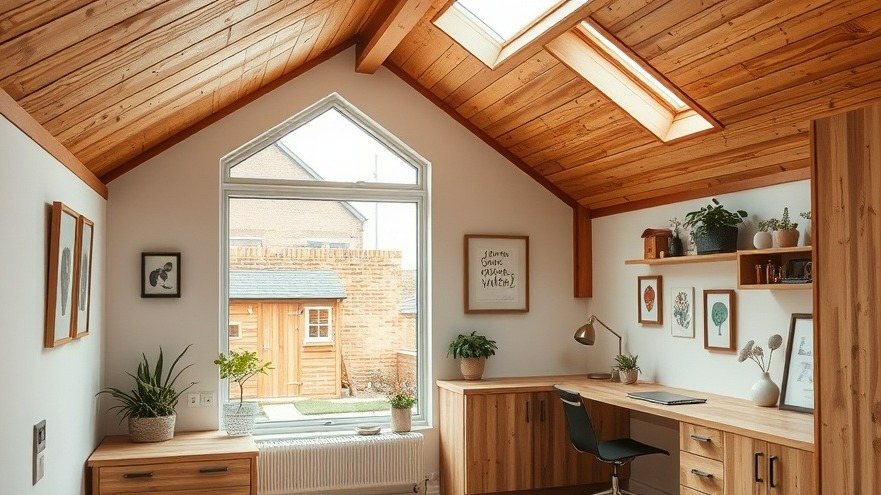
Building a Sustainable Workspace: Lessons from Twin Pitches
In the quest for comfortable and efficient remote workspaces, the recent renovation of an Edwardian home in Ealing by Atelier Baulier offers some insightful inspiration for digital nomads. Known as Twin Pitches, this project emphasizes a design ethos centered around 'frugality and honesty'—a mantra that directly aligns with the needs of individuals seeking both aesthetic appeal and functionality in their home offices.
Utilizing Natural Materials for Comfort and Productivity
The studio's decision to incorporate minimally-finished plywood and plaster surfaces creates a warm and tactile environment, crucial for enhancing productivity in remote work settings. The use of natural materials is not only visually appealing but also contributes to overall well-being. A pivotal concept in ergonomics is that comfort plays a fundamental role in our ability to focus. By creating spaces with wood finishes and non-toxic paints, Atelier Baulier has laid the groundwork for a healthy home office.
Maximizing Space without Compromising Sustainability
The extension of the home is not merely a physical addition; it demonstrates a 'fabric first' approach where the design integrates with existing structures rather than detracting from them. For digital nomads living in smaller residences, maximizing space is essential. The inclusion of a new kitchen and sunroom within the rear extension showcases how intelligent design can significantly benefit functional areas, turning a family home into an efficient workspace.
Cost-Effective Energy-Efficient Practices
The philosophy of minimizing unnecessary costs while creating a thriving living environment reflects well in Atelier Baulier's choices, such as the use of screw piles instead of concrete foundations and incorporating energy-efficient appliances. For those setting up remote workspaces, investing in energy-efficient technologies like quality windows and smart appliances can lead to substantial savings in the long term, while also reducing your environmental footprint.
Creating a Health-Conscious Environment
The project aligns with current trends in sustainable home-building that prioritize health-conscious choices. For instance, the avoidance of VOC-emitting products and opting for low-impact materials directly correlates to creating a workspace that fosters productivity without harmful side effects. By implementing sustainable design elements, digital nomads can create home offices that are not only functional but also healthy.
Incorporating Creative Color Palettes
A highlight of Twin Pitches is its bold color choice that adds a lively atmosphere to the environment—a crucial aspect for remote workers facing the monotony of everyday work. Color psychology hints that a well-curated palette can improve focus and creativity, so choosing colors that inspire can help energize your home office.
As we navigate the complexities of remote work, the principles showcased in Atelier Baulier’s Twin Pitches extension exemplify how smart, eco-friendly design can lead to a comfortable workspace. Embracing sustainable practices in home-office renovations not only enhances our work lives but also contributes positively to our wellness and the environment.
 Add Row
Add Row  Add
Add 




Write A Comment